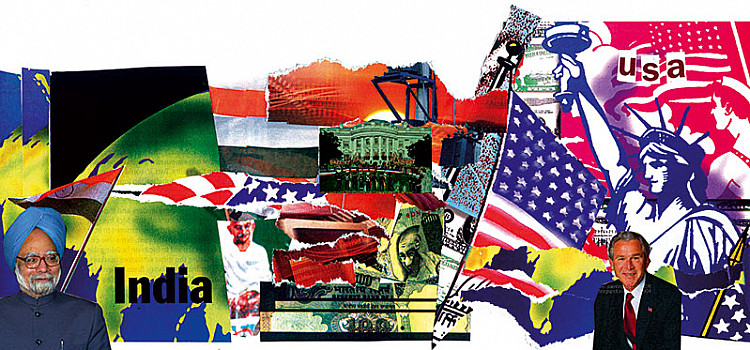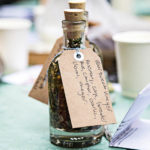Letter from Washington
One of the first items exported from the United States to India – would you believe it – was ice. Yes, ice; great big blocks of ice. Early in the 19th century, some 175 years before ICE became an acronym for ‘information communication and entertainment’ in pink press parlance, the Tudor Ice Company of Boston, Massachusetts, transported ice to Calcutta and Madras, a feat that was recorded in the Indian Gazette of Lord William Bentinck’s era under the headline, ‘Importation of American Ice’.
A few decades before that, among the first Indian exports to America was cotton, mainly from what is now Tamil Nadu, which is why you will come across towns named Madras and Salem in the United States. The story goes that the first Indian to be spotted in the United States late in the 18th century was a ‘brown chap’ who was given the name ‘Madras Man’. The only software he had on him, we can now joke, is a piece of Coramandel cotton that he wore.
One was reflecting on these historical vignettes on a steaming hot July morning on the White House South Lawns as we waited for US President, George Bush and Indian Prime Minister, Manmohan Singh, to arrive for the welcome ceremony. All around, Indians and Americans milled about excitedly in equal numbers. The flashback to history was provoked by not just the weather – the stifling heat was more akin to that of Kolkata and Chennai – but also by the American guard of honour from men dressed in colonial togs. They were playing random military tunes, but I was thinking of the time when Francis Scott Key wrote the Star Spangled Banner, the American national anthem, on board the HMS Minden, anchored in the Chesapeake Bay after travelling from Mumbai, where it was built by Jamshedji Bomanji Wadia. Soon, my mind was ‘Truckin’ with Grateful Dead’s What A Long Strange Trip It Has Been: ‘Sometimes the light’s all shinin’ on me / Other times I can barely see / Lately it occurs to me what a long, strange trip it’s been.’
Yes, the US-India relationship has been something like that – a long strange trip. There have been moments of light, like when – to delve back into history – Swami Vivekananda wowed audiences in Chicago and Calvin Coolidge invited Paramahansa Yogananda to the White House (spirituality preceded software services as India’s first great export). There are other times you can barely see as the US became absorbed in the World Wars and India fought for its independence against the same Brits that Americans had freed themselves from. Buried under the Cold War and the hot rhetoric in the 20th century were notes of tension, like when President Nixon despatched the nuclear armed Seventh Fleet to threaten India in 1971 and moments of close economic ties, like when J R D (‘Jamshedji’) Tata scoured the industrial townships of Ohio and Pennsylvania in 1904 looking for technology and talent to kick-start India’s steel industry. Or when Edison’s General Electric company sent its engineers to Mysore to crank up a hydro-electric plant in Sivasamudram to light up the Kolar Gold Fields.
So much water has flown down the Ganga and the Mississippi, the Yamuna and the Potomac. But on that muggy Monday in July 2005, a relationship long put on ice (and cotton-balled) had finally warmed up – maybe even heated up, according to some pundits.
So what has caused this sea change between two countries that have looked at each other with doubt, mistrust, apprehension – some of it still exists in residual form – for more than half a century? And has it really changed or is it just another passing phase, like that glimmer of hope during the Rajiv Gandhi years when there was a brief honeymoon before the naani yaad diladenge mood took over?
There are three issues in the 21st century on which India-US ties will rest – services, security and secularism. A combination of civilisational legacy (emphasis on learning), colonial bequest (English) and demographic excess (population) means India will shortly have a 200 to 300 million educated English speaking workforce. We will be the biggest English speaking country in the world soon. Located halfway across the world from the US, we will be corporate and business America’s back office and second shift. Their overtime, offshore underling. Forget the momentary hoopla over outsourcing and flight of jobs. This 21st century reality of a 200 plus million eager beavers hungry for success will impel US towards India (or Indians towards the US). It is a bridge that will not be breached.
The United States will also increasingly begin to depend on India to safeguard its economic security in Asia – a continent where it is unwelcome in more than half the countries. Its current imperial overstretch cannot sustain for long and Iraq is a good reminder of that. At some point it will have to outsource its security, especially in Asia and there is one large country that can do it – for a price, of course.
But the noblest reason why America and India are coming together is their faith in democracy and secularism. India provides the most stirring example of the ideal that America’s founding fathers aspired to for their country. Few things have impressed the Clinton and Bush dispensations more than India’s ability to effect a peaceful transition of power (even less controversially than in the US) time after time, election after election.
When Bush first met Manmohan Singh in Moscow, he introduced him to his wife, Laura, saying, “Here’s the leader of a one billion strong democracy with 150 million Muslims, not one of whom has joined Al Qaeda.’’ At the highest levels of the US government, there is astonishment at this marvellous society that can accept, gracefully and calmly, a Sikh Prime Minister, a bachelor Muslim President, and a widowed Roman Catholic parliamentary leader (in the same way, Indian-American Hindus, Sikhs and Muslims have fought for the US in Iraq).
It’s the social and political marvel that is India which is as much an attraction to the US as its economic and military promise. Of course, there are many wrinkles to this alliance and Cassandras on both sides are forever ready to wheel out potential problems and pitfalls. But, the 21st century dawn’s early light holds the unmistakable promise of an Indian-American honeymoon.
Related posts from Verve:
Verve Trending
Sorry. No data so far.
us on Facebook to stay updated with the latest trends






